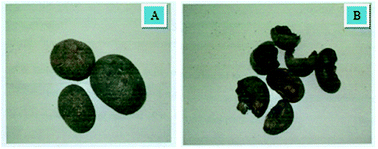Gold nanoparticle catalyzed intramolecular C–S bond formation/C–H bond functionalization/cyclization cascades†
Abstract
An efficient synthesis of 2-(N-aryl)aminobenzo[d]-1,3-thiazoles via intramolecular C–S bond formation/C–H bond functionalization utilizing an unusual cocatalytic Au-NPs/KMnO4 system under an oxygen atmosphere at 80 °C is presented. Au-NPs can be easily prepared by using HAuCl4 with reductive potential of Kayea assamica (sia nahor) aqueous fruit extract. The catalyst can be easily separated and recycled eight times without any appreciable loss of activity.


 Please wait while we load your content...
Please wait while we load your content...